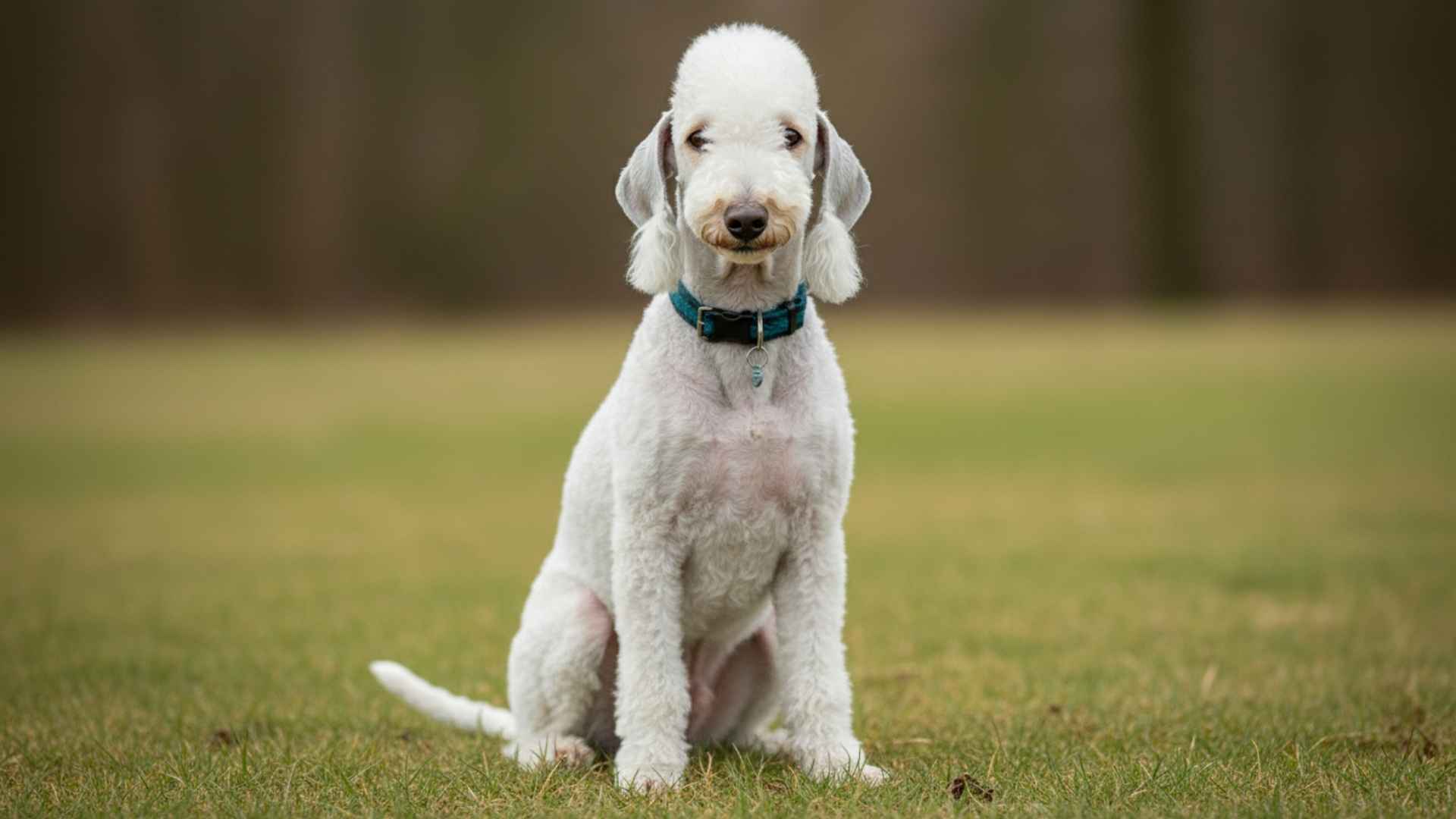The world of rare dog breeds is filled with fascinating stories and jaw-dropping price tags. While most dogs are beloved companions, a select few have become symbols of luxury, sought after by the wealthiest dog lovers and collectors around the globe. Their rarity and unique traits make them stand out, often fetching prices that seem almost unbelievable.
Their scarcity, combined with historical significance or challenging breeding processes, contributes to their exorbitant costs. Some of these breeds have been sold for millions of dollars, cementing their place as the pinnacle of canine luxury.
In this article, we take a look at the rarest and costliest dog breeds ever sold. Join us as we explore the fascinating world of exclusive dogs and discover what makes them so prized and highly coveted in the luxury pet market.
Rarest And Costliest Dog Breeds Ever Sold
1. Azawakh
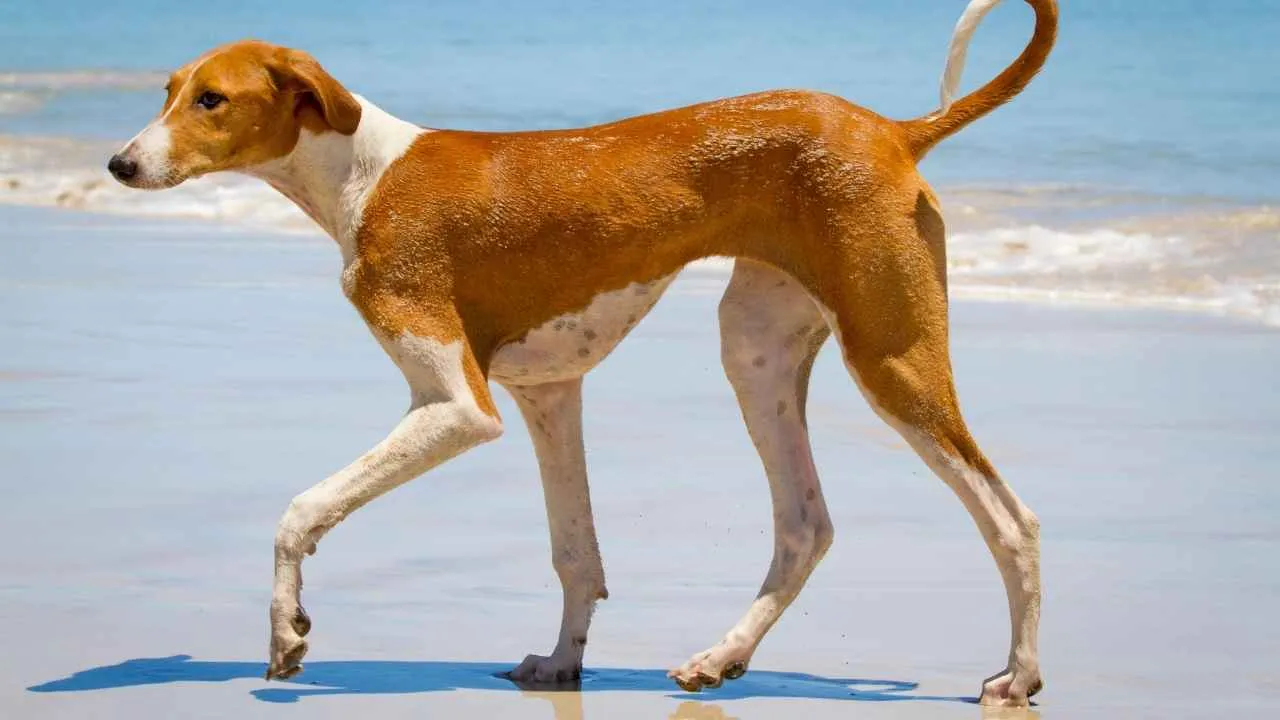
Tall, elegant, and graceful, the Azawakh is a West African sighthound bred for endurance and speed. This resilient hunter has spent centuries pursuing gazelles across the scorching sands of the Sahara.
Minimal Grooming, Maximum Care
The Azawakh’s short, sleek coat requires little upkeep. With minimal shedding, this breed only sheds moderately throughout the year and experiences a heavier molt during seasonal changes.
Regular brushing can help manage shedding during spring and fall, but overall, they’re low-maintenance in terms of grooming.
Training: Consistency Is Key
Azawakhs are intelligent and loyal dogs, but remain cautious and observant. They respond best to training with patience, trust, and positive reinforcement.
While they’re quick learners, external distractions such as noise or wildlife can make them hesitant to follow commands, as per the AKC. Ensuring a calm, focused environment during training will yield the best results.
What Makes Azawakhs So Expensive?
Rarity in the U.S.: Azawakhs are extremely rare in North America, making them one of the most sought-after breeds.
Unique Origin: Their roots in the Sahel region of Africa, where they served as both hunting companions and protectors, add to their mystique and allure.
Health Conditions and Longevity: With their lean, athletic build, these dogs are healthy and hardy, contributing to their high demand.
Price Range: On average, an Azawakh puppy costs around $2,500, with rarer bloodlines pushing prices even higher.
2. Bedlington Terrier
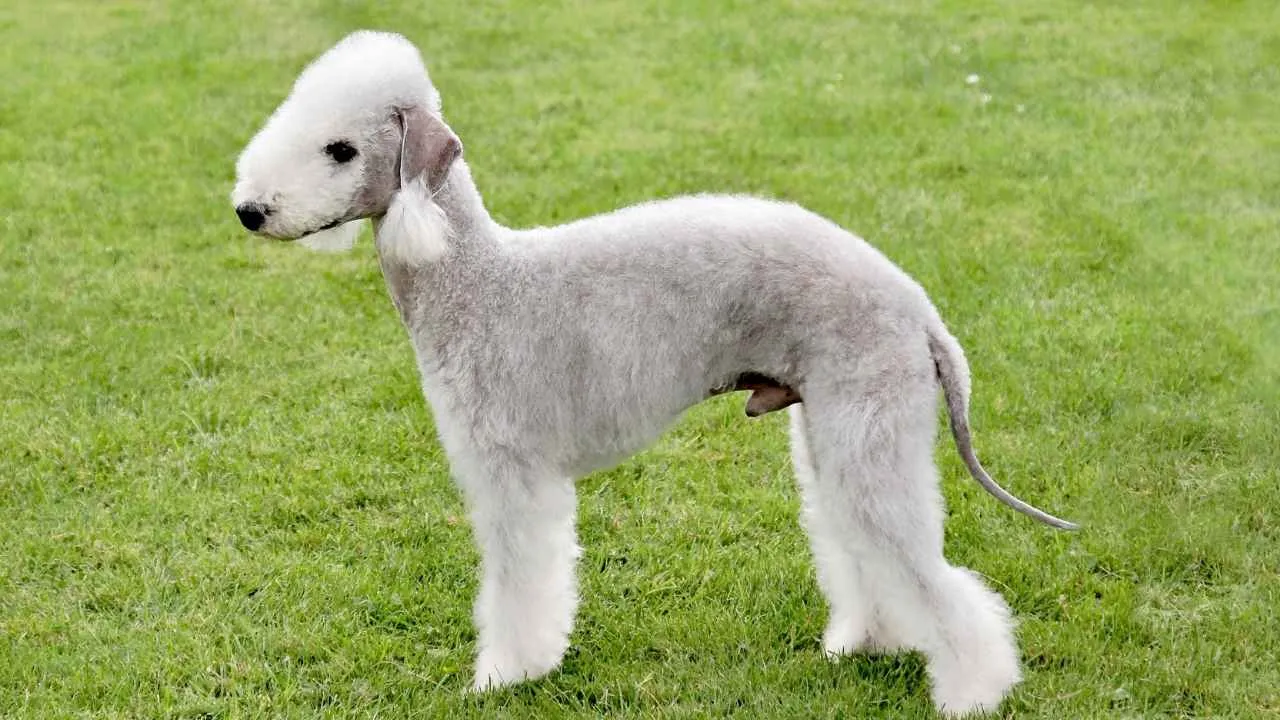
Graceful and charming, the Bedlington Terrier combines the elegance of a lamb-like appearance with the spirit of a true terrier. These affectionate dogs are friendly housemates, alert watchdogs, agile athletes, and irresistibly cozy companions during quiet evenings at home.
A Poodle-Like Coat with a Twist
The Bedlington Terrier’s signature curly, soft coat requires regular grooming to keep it looking its best. While their coat doesn’t shed heavily, it needs to be hand-stripped or trimmed every few months to maintain its signature appearance. With proper maintenance, their unique, lamb-like look can remain polished and fluffy.
Smart and Playful, But Easily Distracted
Training a Bedlington requires patience and creativity. Positive reinforcement is key to encouraging desired behaviors, and early socialization with people and pets will help develop a well-rounded temperament, as per PDSA.
Why Bedlington Terriers Can Fetch a Premium Price
Unique Appearance: Their distinct lamb-like look, with a tufted head and curly coat, makes them stand out and in demand.
Active and Affectionate: Known for their loving nature and high energy, Bedlington Terriers make wonderful companions for active families.
Rare and Historical: With a rich history as hunters and companion dogs, their rarity and pedigree add to their high value.
Price Range: Expect to pay between $1,500 and $3,000 for a well-bred Bedlington Terrier, with rare coat colors and champion bloodlines pushing the price higher.
3. Otterhound
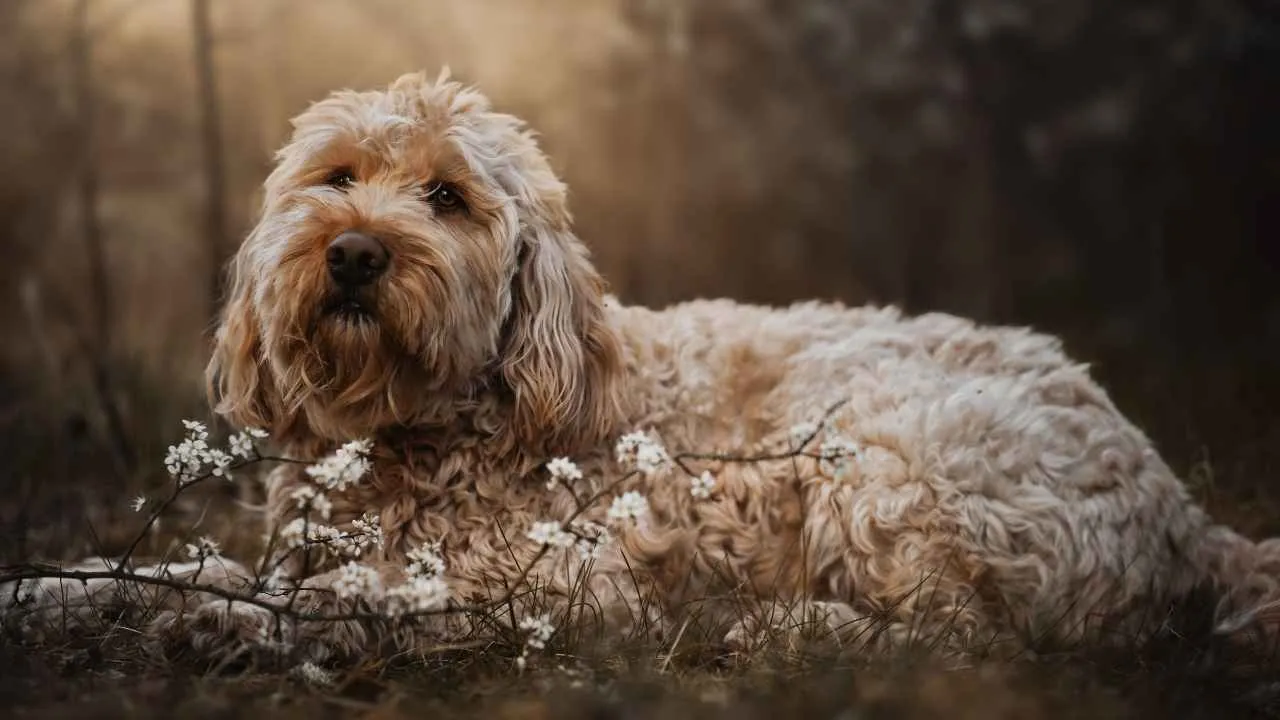
Big-hearted, boisterous, and affectionate, the Otterhound was originally bred in medieval England for the now-outlawed sport of otter hunting. This rare breed stands out for its dense, shaggy coat, webbed feet, keen sense of smell, and natural love for the water.
A Shaggy Coat with Waterproof Qualities
The Otterhound’s dense, shaggy coat is one of its most distinct features. This water-resistant fur requires regular brushing to prevent mats and tangles, particularly since the breed’s natural habitat involves wet conditions.
Positive Reinforcement for This Gentle Giant
Training an Otterhound requires patience, consistency, and lots of positive reinforcement. While they are among the smartest breeds, their independent streak can make them stubborn at times.
Early socialization and continuous training help them become well-mannered, but they still thrive best with a firm, loving hand and plenty of motivation.
Why Otterhounds Are So Expensive
Rarity: The Otterhound is a rare breed, with only a few hundred registered in the world, as per WebMD. Their unique role in history as otter hunters no longer has much demand, further limiting their population.
Specialized Skills: Originally bred to be exceptional swimmers and trackers, Otterhounds have a distinctive skill set, making them desirable for certain specialized dog enthusiasts.
Size and Care: Their large size and the attention their grooming needs require add to the cost of ownership.
Price Range: Due to their rarity and unique traits, an Otterhound puppy can cost anywhere between $2,500 and $5,000, especially if it has a strong pedigree.
4. Tibetan Mastiff
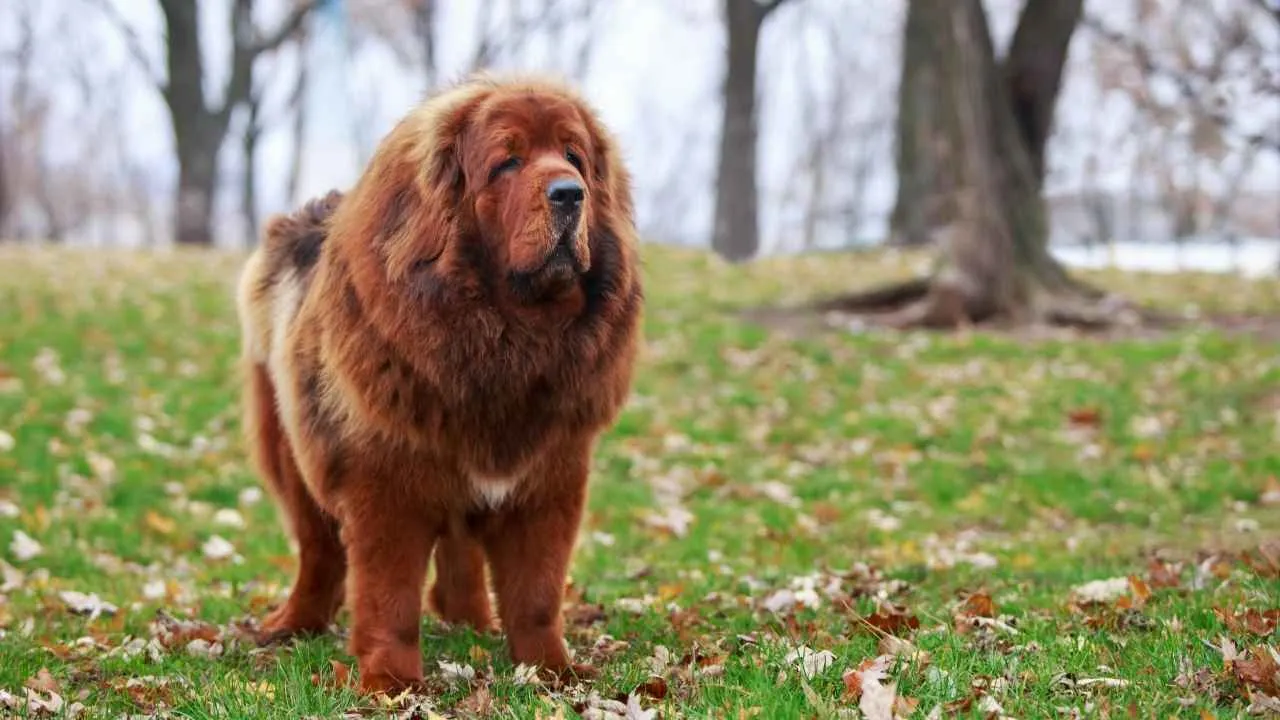
Watchful, dignified, and commanding, the ancient Tibetan Mastiff is the ultimate guardian dog. These thick-coated giants are calm and gentle at home, deeply devoted to their families, yet naturally reserved and territorial around strangers.
A Lion’s Mane Requires Regular Maintenance
Tibetan Mastiffs boast a thick double coat with a majestic mane that gives them a lion-like appearance. Regular grooming is essential to prevent matting and reduce shedding, especially during seasonal changes.
Their dense undercoat can trap dirt, so frequent brushing helps maintain their royal look and keeps their skin healthy.
Independent and Intelligent, But Stubborn
Training a Tibetan Mastiff requires patience and consistency, as per PetMD. Though they are intelligent and moderately easy to train, their independent nature means they may not always be eager to follow commands.
Early socialization is crucial to help them become well-adjusted, and their natural guarding instincts make them more cautious around strangers.
Why Tibetan Mastiffs Command High Prices
Exclusivity and Rarity: Tibetan Mastiffs are a rare breed with a long history, often considered a symbol of prestige, especially in their native Tibet.
Ancient Lineage: With roots tracing back thousands of years, these dogs were used to guard monasteries and livestock, giving them a revered place in Tibetan culture.
Impressive Size and Strength: Their size and protective instincts make them an intimidating yet loyal dog, perfect for large properties or experienced owners.
Price Range: A Tibetan Mastiff puppy can cost anywhere from $2,000 to $10,000, with some rare or exceptional pedigrees even reaching higher prices.
5. Norwegian Lundehund
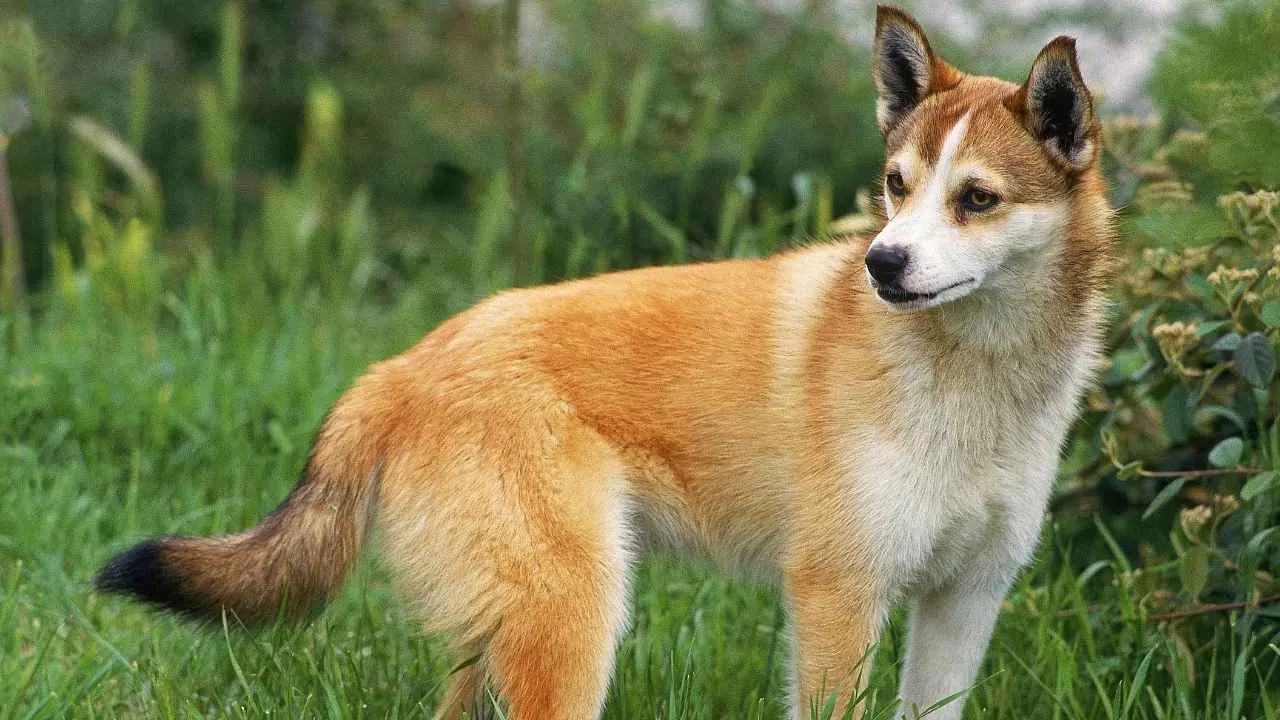
Originating from Norway’s rocky island of Vaeroy, the uniquely built Norwegian Lundehund is the only dog breed ever developed specifically for puffin hunting. With puffins now protected, this rare and agile breed has found a new role as a lively, friendly, and athletic companion.
Low Maintenance for a High-Energy Breed
Despite their remarkable physical traits, Norwegian Lundehunds require minimal grooming. Their short coat sheds moderately, and a weekly brushing is usually enough to keep their fur healthy.
However, the breed’s multiple toes and flexible joints may require occasional care to ensure they remain in top condition, particularly after outdoor adventures.
Clever Yet Independent
Training a Norwegian Lundehund requires patience and consistency. While these dogs are intelligent, their independent streak means they may question commands, asking, “Why?”
Positive reinforcement works best, but owners should be prepared for a longer training period, especially with potty and leash training.
Why Norwegian Lundehunds Are So Costly
Rare and Unique Traits: The breed’s six toes, hyper-flexible spine, and ears that close on command make it one of the most unique dogs in the world, as per Purina.
Historical Significance: Once essential for hunting puffins, these dogs have a storied history that ties them to Norway’s coastal communities.
Extinction Risk: After nearly going extinct due to distemper outbreaks, the breed is rare and has a small population, contributing to its high price.
Price Range: A Norwegian Lundehund puppy can cost between $1,000 and $3,000, with imported dogs from Europe often costing more due to limited breeders in the U.S.
6. Pharaoh Hound
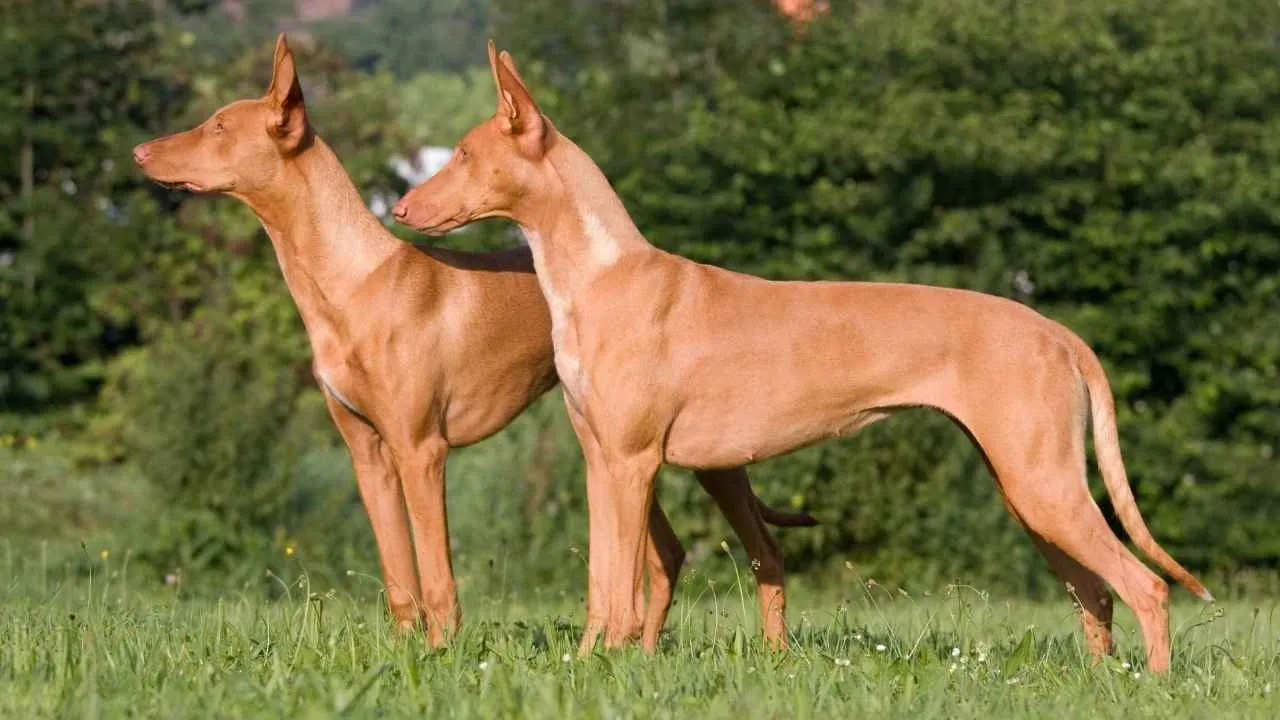
The Pharaoh Hound, Malta’s ancient “Blushing Dog,” is an elegant yet hardy sprinter bred to chase small game across tough terrain. Fast, determined, and sharp on scent, these affectionate and friendly hounds are just as happy relaxing peacefully at home as they are racing in the field.
Easy Care for a Regal Breed
Pharaoh Hounds have a short, sleek coat that requires minimal upkeep. They shed lightly, so a quick weekly brushing is enough to maintain their coat’s natural shine and health.
Their grooming needs are quite low, making them perfect for owners who prefer a wash-and-wear dog. However, it’s still good to check their skin regularly for any issues, especially after outdoor activities.
Smart but Independent
Training a Pharaoh Hound requires patience and consistency. Positive reinforcement, such as treats and praise, works best.
While they’re quick to learn, their natural prey drive may distract them during training, especially in environments with lots of outside stimuli. Short and engaging sessions are ideal to keep their attention, as per Hill’s Pet.
Why Pharaoh Hounds Are So Costly
Rarity and Demand: Pharaoh Hounds are a rare and expensive dog, especially outside of Malta, which contributes to their high cost.
Historical Significance: The Pharaoh Hound’s ancient history and connection to Egyptian nobility make it a highly sought-after breed.
Limited Breeding: Due to their small population and limited breeders, finding a Pharaoh Hound can be difficult, adding to the price.
Price Range: You can expect to pay anywhere from $1,500 to $2,500 for a Pharaoh Hound puppy, with prices often higher for rare lines or imported dogs.
7. Bergamasco Shepherd Dog
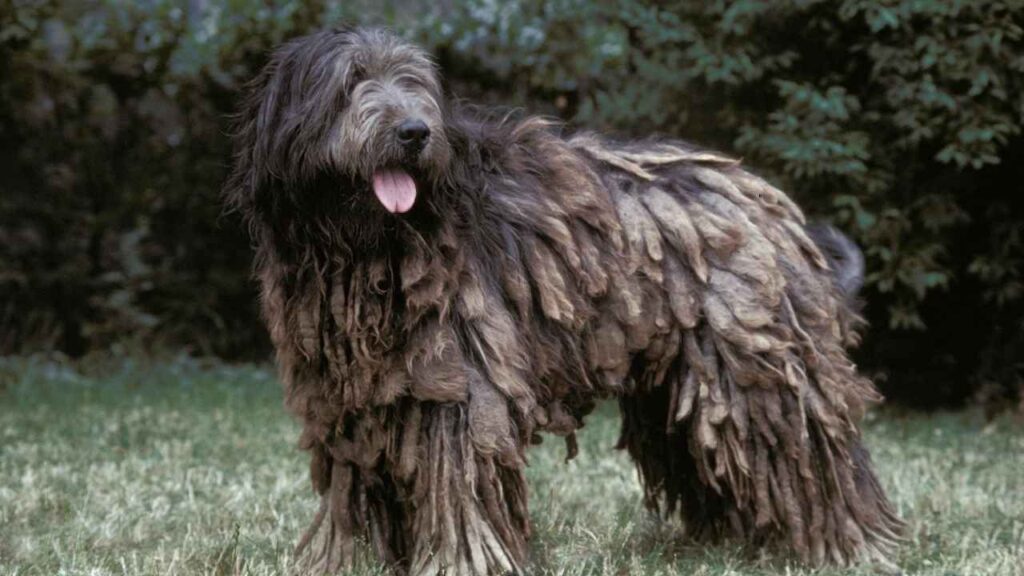
Friendly and great with children and other pets, the low-maintenance, hardy Bergamasco is far more than its striking coat. Intelligent, eager to please, and deeply devoted, this breed combines patience with a strong protective instinct, making it both a loyal worker and a gentle family companion.
Low Maintenance for a High-Energy Breed
Despite their remarkable physical traits, Bergamasco Shepherds require minimal grooming. Their distinctive coats are made of dense, matted wool, but pet owners only need to separate mats at around age 1. After that, no regular brushing is needed, and baths are only required 1-3 times a year.
High Intelligence Yet Stubborn
Bergamascos are highly intelligent, but their independent nature means they can be a bit stubborn during training. They thrive on positive reinforcement, but owners must be patient and consistent.
Their problem-solving abilities, honed by centuries of being a herding dog, can make them a challenge to train.
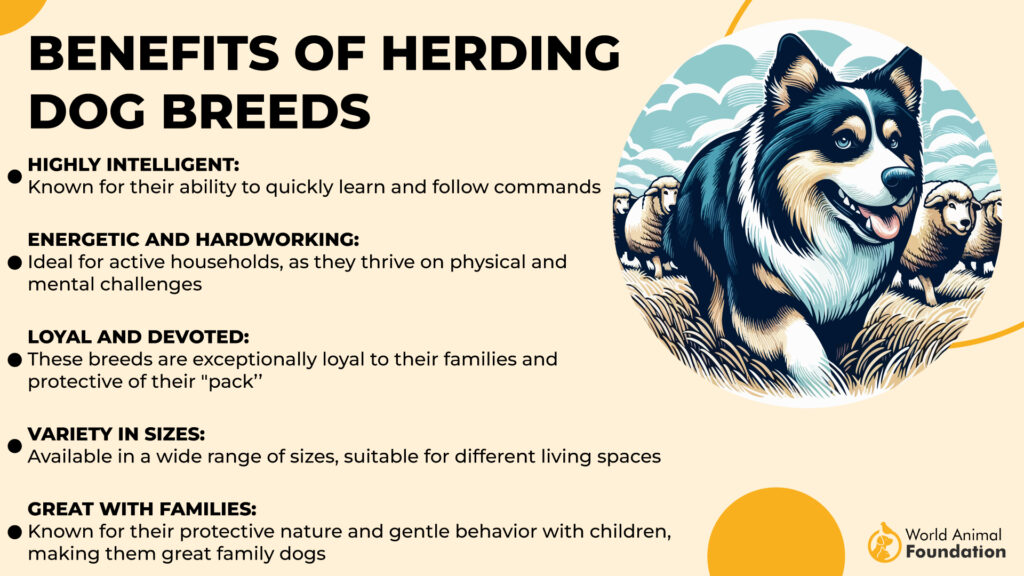
Why Bergamasco Shepherds Are So Costly
Rarity: This breed is quite rare, especially outside of its native Italy, which makes it one of the most expensive dog breeds and harder to find.
Historical Significance: With its roots in ancient herding traditions, the Bergamasco has a rich and storied history.
Preservation: Saved from near extinction by Dr. Maria Andreoli after WWII, this breed’s bloodlines are carefully maintained.
Average Price Range: Expect to pay anywhere from $1,500 to $3,000 for a Bergamasco Shepherd puppy, depending on its pedigree and availability.
Conclusion
These expensive dog breeds, often selling for thousands of dollars, are prized for their distinct features and loyalty. However, the overall cost doesn’t end with the price of the pup – ongoing vet care, grooming, and potential health issues like hip dysplasia or cardiac disorders can add to the overall expenses.
Breeding expenses and adoption fees can be high, and certain breeds may be prone to hereditary conditions such as elbow dysplasia or autoimmune issues. Pet ownership of these purebred dogs can be rewarding, but owners must be prepared for the significant upfront cost and the need for regular health checks to ensure the well-being of their companions.
Ultimately, owning a costly dog breed is an investment in a lifetime of love and companionship. From the rarest dogs in the world to the most expensive dog breeds ever sold, these loyal companions require proper care and attention, but the bond they offer is priceless.


